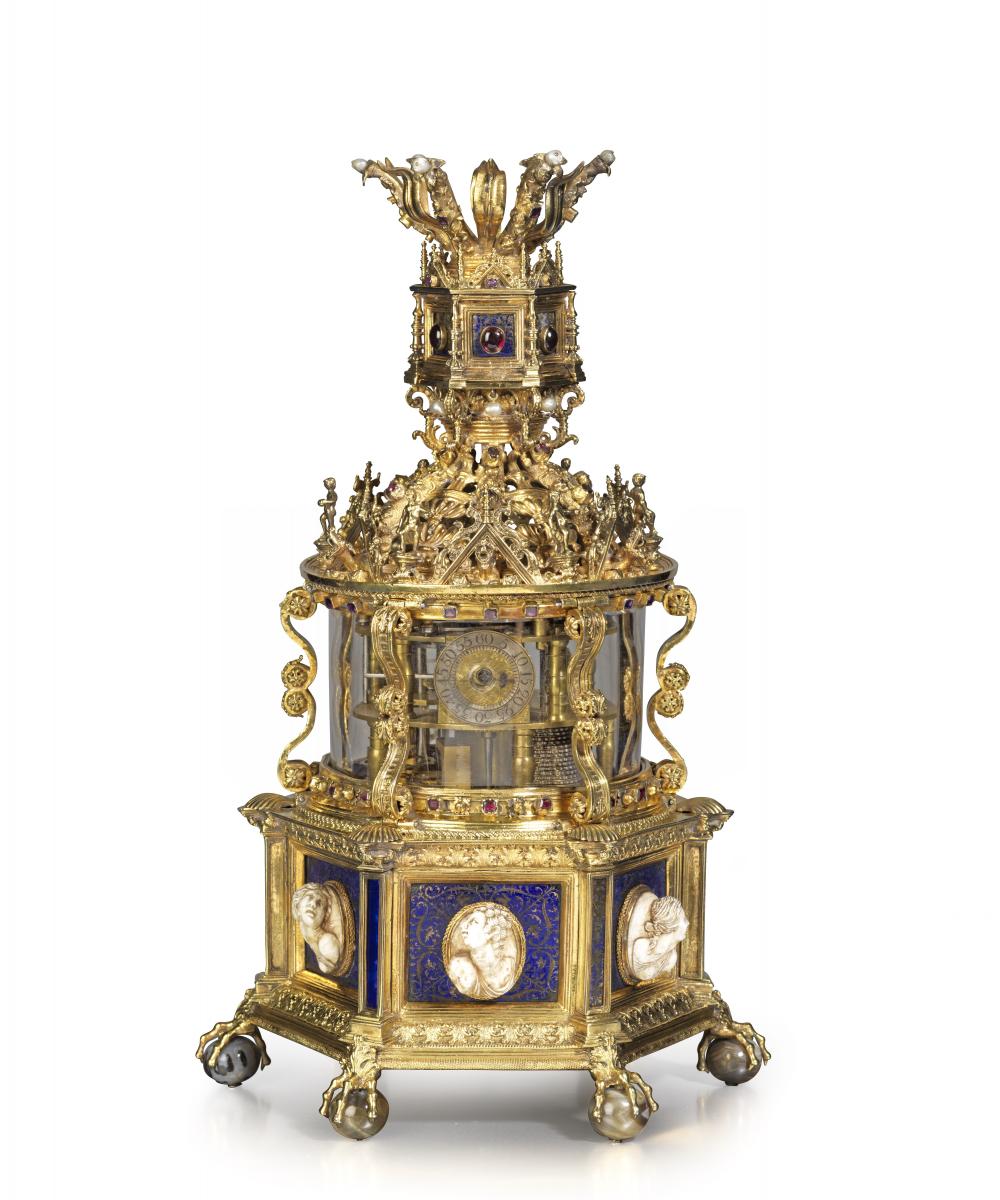This wonderful Cornish workshop and museum is dedicated to the legacy of studio pottery trailblazer Bernard Leach
Hidden Gem: discover King Henry VIII’s Royal Clock Salt
Hidden Gem: discover King Henry VIII’s Royal Clock Salt
12 Oct 2018

In the setting of a Tudor banquet, a bejewelled object glitters in the candlelight. Just 30cm tall, the item is set with precious stones: rubies and garnets adorn its surface, and pendant pearls hang from the top. Known as the Royal Clock Salt, this courtly treasure has a chequered history.
A combination of a table clock and saltcellar, the Royal Clock Salt is thought to have been made in Paris by the royal goldsmith, Pierre Mangot, in around 1530–35. Although it’s not marked, Dr Dora Thornton, curator of The Goldsmiths’ Company’s Collection of Antique and Contemporary Silver, explains that the item has many of Mangot’s signature characteristics: ‘the jewelled surfaces, the use of rock crystal, and the blue enamel plaques decorated with gilding are also seen in his other pieces.’
This fashionable luxury accessory was probably a diplomatic gift between King Francis I of France and King Henry VIII of England. ‘It was like having the latest smartphone as an accessory,’ Dr Thornton says. At a time when the relationship between England and France had vacillated between rivalry and friendship – the Hundred Years War had ended around a century before – this gift would have consolidated their alliance.
Remarkable details include the clawed feet clutching balls of agate, and the cameos of classical figures – carved from tropical shells – which are set into enamelled plaques at the base. ‘There’s a sparkle and ripple of light over the surface, which is lovely to look at,’ Dr Thornton explains. ‘The heads carved on the cameos almost twist completely out of their frames – they articulate the surface of the clock in a wonderful way.’
As salt was a valuable commodity in the Tudor era, the object would have been an important status symbol. The closer a diner was seated to the clock salt, the higher their status. Eleven clock salts were listed in Henry VIII’s collection after his death, but only this one survives. The item remained in royal inventories until the outbreak of the Civil War in 1649, when it was sold from the Royal Collection. It was acquired by The Goldsmiths’ Company in 1968.
Today, the object is on loan to the British Museum, and is on display in the Waddesdon Bequest Gallery. It is surrounded by medieval and Renaissance treasures. ‘If you imagine seeing the Royal Clock Salt by candlelight, on the very best white linen and accompanied by sparkling Venetian glass, you can imagine how wonderful it must have looked,’ Dr Thornton says.
The Goldsmiths’ Company will be hosting a conference on the Royal Clock Salt on 22 November. The Royal Clock Salt is on loan to the British Museum’s Waddesdon Bequest Gallery.
Image: The Royal Clock Salt © The Goldsmiths’ Company
About the Author
The Arts Society
JOIN OUR MAILING LIST
Become an instant expert!
Find out more about the arts by becoming a Supporter of The Arts Society.
For just £20 a year you will receive invitations to exclusive member events and courses, special offers and concessions, our regular newsletter and our beautiful arts magazine, full of news, views, events and artist profiles.
FIND YOUR NEAREST SOCIETY
MORE FEATURES
Ever wanted to write a crime novel? As Britain’s annual crime writing festival opens, we uncover some top leads
It’s just 10 days until the Summer Olympic Games open in Paris. To mark the moment, Simon Inglis reveals how art and design play a key part in this, the world’s most spectacular multi-sport competition



